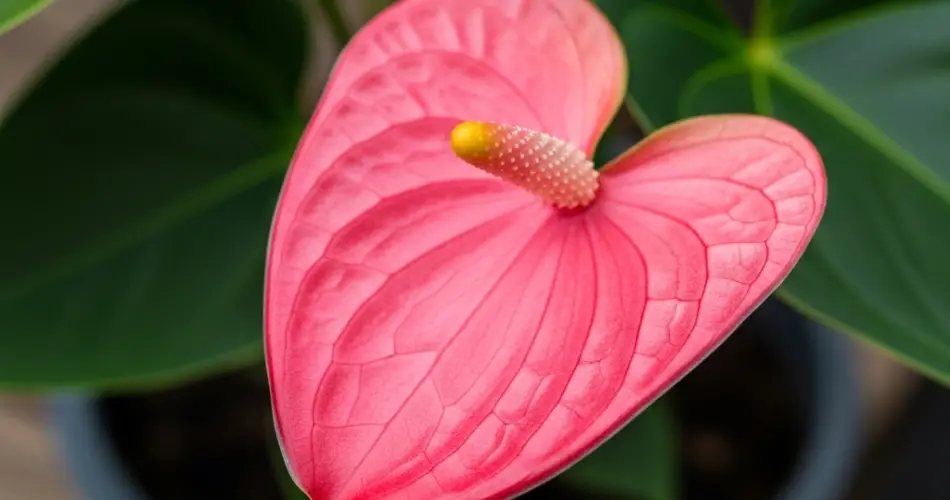Anthuriums, with their glossy leaves and striking, heart-shaped flowers, are elegant additions to both indoor and outdoor plant collections. While generally low-maintenance, these tropical beauties can sometimes fall victim to pests that affect their health and appearance. Identifying these pests early and treating them with natural, organic methods is the key to keeping your anthurium thriving without resorting to harsh chemicals.
Here’s a complete guide to recognizing common pests that target anthuriums and how to treat them effectively using organic solutions.
1. Aphids
Identification:
Aphids are small, soft-bodied insects that often gather in clusters on new growth, stems, and undersides of leaves. They can be green, black, yellow, or even pink. Aphids suck the sap from the plant, causing distorted or curling leaves and sticky residue (honeydew) that may lead to sooty mold.
Organic Treatment:
-
Neem oil spray: Mix neem oil with water and a few drops of mild liquid soap, then spray the plant thoroughly, especially under the leaves. Repeat every 7–10 days as needed.
-
Homemade soap spray: Mix 1–2 teaspoons of mild liquid soap in a quart of water and apply with a spray bottle.
-
Introduce beneficial insects: Ladybugs and lacewings naturally feed on aphids and help control the population.
2. Mealybugs
Identification:
Mealybugs appear as small, white, cotton-like masses on leaves, stems, and nodes. These pests also feed on plant sap, weakening the plant and promoting mold growth due to the honeydew they excrete.
Organic Treatment:
-
Isolate the plant to prevent spreading.
-
Use rubbing alcohol: Dip a cotton swab in 70% isopropyl alcohol and dab each mealybug. For larger infestations, mix one part alcohol to four parts water and spray the plant.
-
Neem oil also works well for repeated treatment.
3. Spider Mites
Identification:
Spider mites are tiny and difficult to see without a magnifying glass, but they leave visible signs like fine webbing, yellow stippling, or speckled leaves that eventually dry out. They prefer dry conditions and often appear during warm indoor heating seasons.
Organic Treatment:
-
Increase humidity: Misting the plant regularly or placing it near a humidifier helps deter mites.
-
Rinse the plant: Use a strong spray of water to knock off mites, especially under leaves.
-
Neem oil or insecticidal soap spray can be applied weekly to break their life cycle.
4. Scale Insects
Identification:
Scale insects look like small, oval bumps attached to stems and leaves. They may be brown, tan, or black and can easily be mistaken for natural plant parts. Like aphids and mealybugs, they feed on plant sap and excrete honeydew.
Organic Treatment:
-
Manual removal: Use a soft toothbrush or cloth soaked in alcohol to gently scrape off the scales.
-
Neem oil spray: Apply thoroughly once a week until all signs are gone.
-
Horticultural oil: A lightweight oil spray suffocates scale insects and is safe for most indoor plants.
5. Fungus Gnats
Identification:
These tiny, black flying insects are commonly found around the base of potted anthuriums. While adult gnats are mostly a nuisance, their larvae feed on organic matter in the soil and can damage young roots.
Organic Treatment:
-
Let the soil dry out: Fungus gnat larvae thrive in moist environments. Allowing the top inch of soil to dry between waterings can break their life cycle.
-
Use sticky traps: Yellow sticky traps can capture adult gnats.
-
Apply beneficial nematodes or BTi (Bacillus thuringiensis israelensis): These natural treatments target larvae in the soil without harming plants or pets.
General Preventive Measures
Preventing pest infestations is easier than treating them. Incorporate these habits into your anthurium care routine to reduce pest problems:
-
Inspect new plants before bringing them indoors or placing them near others.
-
Wipe leaves regularly with a damp cloth to remove dust and potential pests.
-
Quarantine new plants for at least a week to ensure they’re pest-free.
-
Avoid overwatering, which can lead to mold and attract pests like fungus gnats.
-
Use clean pots and tools when repotting or pruning.
When to Repot or Prune
If an infestation is severe, you may need to:
-
Prune affected leaves and discard them carefully.
-
Repot the plant in fresh, sterile soil to remove pest eggs or larvae living in the potting mix.
-
Always sterilize pruning shears and use clean containers.
Final Thoughts
While pests can be frustrating, they don’t have to spell disaster for your anthurium. With proper identification and consistent use of organic treatments like neem oil, soap sprays, and beneficial insects, you can manage pest issues naturally and keep your plant healthy and beautiful. Monitoring your anthurium regularly and practicing good plant hygiene are the best ways to enjoy its glossy foliage and vibrant blooms year-round.



